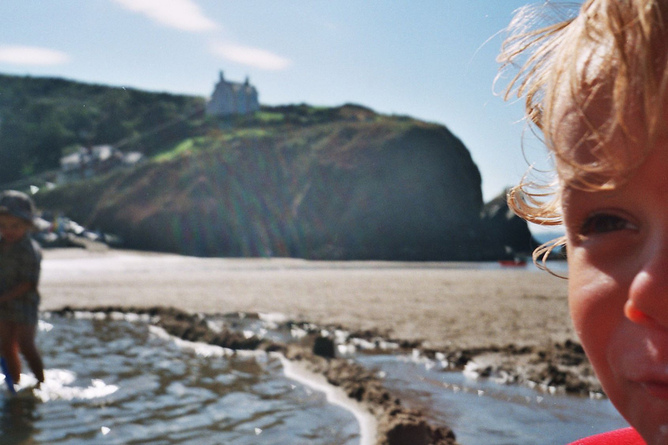
How Safe are Your Online Memories? (Op-Ed)

This article was originally published at The Conversation. The publication contributed the article to LiveScience's Expert Voices: Op-Ed & Insights.
How many of your cherished memories, and even important work documents, only exist online? Taken together, photo and video sharing sites, blogging and microblogging sites, as well as social media, have formed an online space that has changed the way people share information. But how much of the work we do, or the memories we have captured, will still be there in a few years?
Over the last quarter of a century, industry and academia alike have slowly come to the realisation that digital data is actually extremely fragile. Data corruption, hardware and software obsolescence and loss of metadata can easily make data inaccessible.
It would be complacent to suggest that the problems of digital preservation have been resolved, but at least the problem is now well recognised and factored in to the policies of major research funders and serious commercial enterprises.
Many of us got used to having our data under our own control. We worked in an era where digital infrastructure was under the direct control of the data generating organisations or individuals. This was a time when the work was being done on a university or business machine, using their networks, repositories and data stores.
The world no longer works this way. In the profoundly interconnected world of social media, cloud computing and the World Wide Web, data are not simply presented for passive consumption in the forms and structures that they have been for hundreds of years.
Paths to discovery, sharing, storage, reuse, enhancement and recombination have been hugely accelerated and simplified. This has occurred to such an extent that ways of communicating with friends, family and colleagues, undreamed of at the turn of the millennium, are now commonplace.
The impact of social media has changed the traditional network of relationships between people, their employers, their business and personal data. These changing relationships both reflect and effect broader social changes as digital technologies have evolved from being facilitators of social practice to become the dominant engine of change in that practice.
So what about the safety and long term availability of your data in this new world, the holiday photos, messages from loved ones or other important documents?
For the vast majority of everyday interaction via social media and other on-line tools, longevity is simply not an issue. In fact, special consideration needs to be given to the desirability of archiving any material from social media at all. The social media sphere is often considered an open and neutral space in which transient engagement takes place. Users may be actively reacting against traditional modes of discourse, and invoking the right to be forgotten.
However, if we assume that we do want to keep some of our data, the world of commercial social media, cloud and distributed computing brings a new set of vulnerabilities. Firstly, users are often not directly in control of their content. Their contract with the platform is unlikely to guarantee perpetual access and may even make claims on rights or ownership.
Data loss still occurs in a commercial context. For example, the catastrophic failure of the Ma.gnolia social bookmarking site shook many people’s faith in web-based storage.
Even Flickr has accidentally deleted users' images. In addition, access to a service can be unexpectedly curtailed, for example, the legal injunction over piracy at Megaupload resulted in large numbers of blameless users losing access to their data.
Other vulnerabilities include the introduction of charging for a previously free service, the introduction of new and unwelcome functionality, such as intrusive registration processes, advertising, or information-sharing regimes.
A service might be sold or blocked (or both; for example, Twapperkeeper). It may change its conditions of use (Facebook and Google). It may be disappear after being declared obsolete or not commercially viable (Geocities, Google Buzz). Or the service may simply go out of business (SixDegrees.com).
The issue of commercial viability raises a further complication. Social media platforms, while often “free”, almost universally require personal registration. The information gathered has real value; the registration is, in fact, a transaction even if there is no charge levied.
Personal information about users and the contacts and on-line behaviour of users within a social media environment is well recognised as having commercial value, even in an anonymous form. Through their use in advertising, these data are in fact one of the main planks in the business model of many ostensibly free sites.
So there are some senses in which the commercial social media sphere does actually constitute a semi-permanent record of your life and activities. Just not in the way you might have thought and one where the data is almost entirely out with your control.
In short, if you want to keep a digital artefact for a long time, be it a digital keepsake or a vital document, then it is up to you to ensure its safety. No one else is likely to. Those of us who might not feel interested in the digital artefacts of our own on-line life story just yet, should at least be aware that the people who own the media through which it is lived are very interested indeed.
Stuart Jeffrey does not work for, consult to, own shares in or receive funding from any company or organisation that would benefit from this article, and has no relevant affiliations.
This article was originally published at The Conversation. Read the original article. The views expressed are those of the author and do not necessarily reflect the views of the publisher. This version of the article was originally published on LiveScience.
Sign up for the Live Science daily newsletter now
Get the world’s most fascinating discoveries delivered straight to your inbox.










